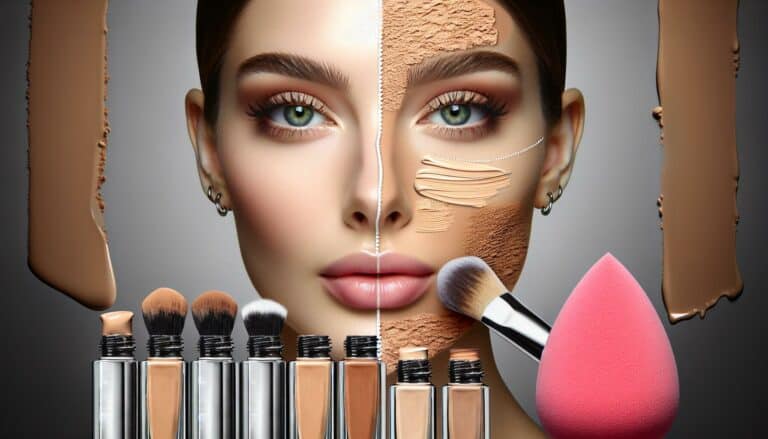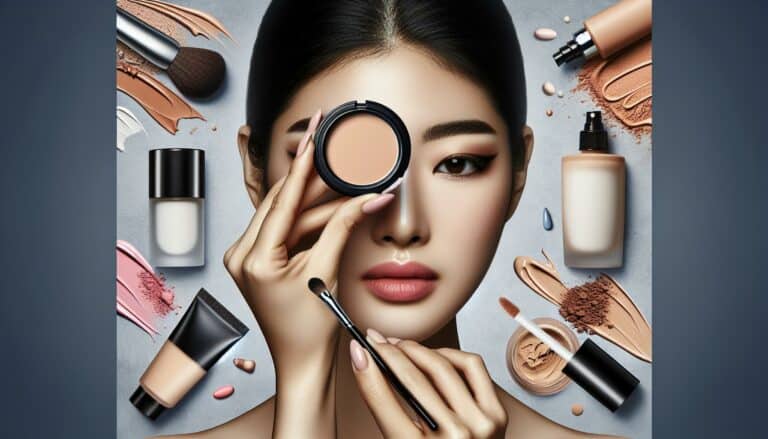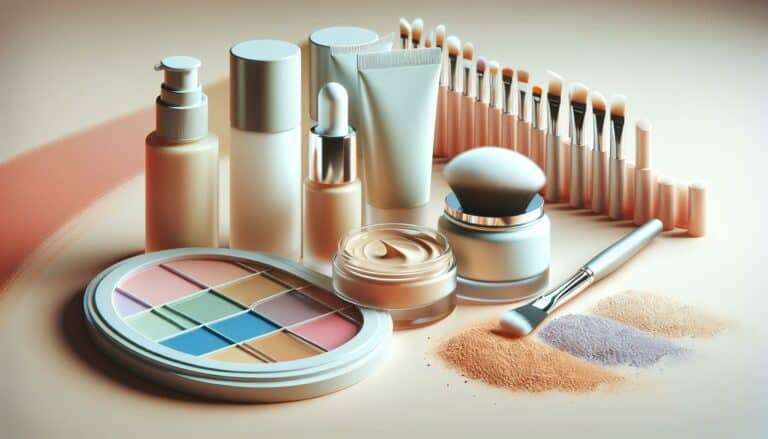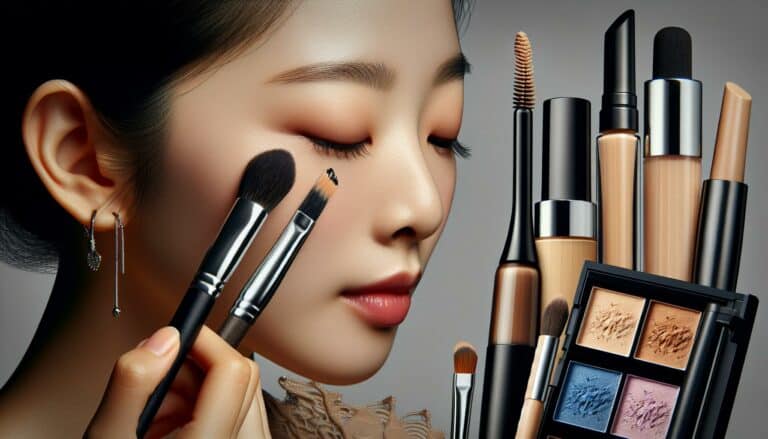Ultimate Guide on How to Conceal Bruises: Tips & Tricks Revealed
Understanding the Color Science of Bruises
When you’re looking to conceal a bruise, it’s crucial to understand the color science behind the healing process. Bruises change colors due to the breakdown of hemoglobin, the compound that carries oxygen in the blood.
Here’s a quick breakdown of the color stages:
| Stage | Color | Timeframe |
|---|---|---|
| 1 | Red | 0-2 days |
| 2 | Blue/Purple | 2-5 days |
| 3 | Green | 5-10 days |
| 4 | Yellow | 10-14 days |
This color shift is your bruise’s way of telling you it’s healing. In the early stages, red and blue/purple hues dominate because the blood is still fresh beneath your skin. As your bruise heals, you’ll notice it turning green, and finally, yellow as the hemoglobin breaks down and is absorbed back into the body.
“Each color stage of a bruise requires a different color corrector for optimal concealing.”
Color Correctors to the Rescue
To effectively conceal a bruise, you’ll need to counteract each color stage with its opposite on the color wheel:
- Use a green corrector for red stages.
- A yellow or peach corrector works best for blue and purple stages.
- For greenish hues, a red or pink corrector will do the trick.
- As the bruise fades to yellow, a lavender corrector helps neutralize the discoloration.
Remember, understanding these nuances not only helps in choosing the right products but also ensures a more natural look as your skin heals.
Concealing Fresh Red Bruises
When you’ve just gotten a bruise and it’s still in that stark, fresh red stage, it can be quite a challenge to cover it up. At this point, your bruise is likely very visible because the injury has just occurred, and the blood that’s come to the surface is what’s giving it that vivid red color. But don’t worry, with the right techniques, you’ll be able to minimize its appearance effectively.
First things first, cooling the area is crucial. Before you even think about concealing, make sure you’ve applied a cold compress to the bruise for at least 15 minutes to reduce swelling and redness. This step might not directly involve makeup, but it’s an essential part of the preparation process.
When it comes to choosing the right color corrector, remember the color wheel. For red bruises, you’re going to want a green color corrector. Green is directly opposite red on the color wheel, making it the perfect choice to neutralize red tones.
| Stage | Color Corrector |
|---|---|
| Fresh/Red | Green |
After applying a thin layer of green color corrector, gently blend it out. The key is to use a light hand; you don’t want to put too much pressure on a fresh bruise. Once you’ve neutralized the redness, you can apply your usual concealer over the top. Make sure to choose a concealer that matches your skin tone to ensure it blends seamlessly.
“Remember, less is more. Building up thin layers gradually will give you a more natural finish than trying to cover it all in one go.”
To set everything in place, lightly dust a translucent powder over the area. This step will help to ensure your makeup doesn’t budge throughout the day.
Concealing Yellowish Older Bruises
As bruises heal, they often enter a stage where they appear yellowish, signaling that your body is breaking down and reabsorbing the blood cells that caused the bruise. This phase typically occurs around 7-10 days after the injury. Concealing these older bruises requires a different strategy than the fresh red or purple bruises you might have tackled earlier.
For yellowish bruises, the key is to use a lavender-colored corrector. The lavender helps neutralize the yellow tones, creating a more natural base for your concealer.
- Apply a Thin Layer: Gently dab a small amount of lavender corrector onto the bruise. Less is more—you can always add another layer if needed.
- Blend Gently: Using a soft brush or your fingertip, blend the corrector into your skin, ensuring there are no harsh lines or patches.
- Cover with Concealer: Once the yellow tone is neutralized, apply a concealer that matches your skin tone. Tap it onto the area instead of rubbing, to avoid disrupting the corrector underneath.
- Set with Powder: For longevity, lightly dust a translucent setting powder over the area to keep everything in place.
| Stage | Color Corrector | Application Tip |
|---|---|---|
| Yellow | Lavender | Light layers, blend well |
Remember: The goal is to enhance your skin’s appearance naturally. Always start with a small amount of product and build up as necessary.
Choosing the right products and applying them with care will make a significant difference in concealing older, yellowish bruises. Whether you’re getting ready for a day at work or a special event, these tips will help you cover any remnants of past bruises effectively, leaving your skin looking flawless.
Choosing the Right Products for Concealing Bruises
When you’re on the hunt for the perfect products to hide those pesky bruises, knowing what to look for makes all the difference. The market is saturated with countless concealers and color correctors, so picking the right one might seem daunting. But don’t worry, you’re about to become an expert.
First off, color correctors are your best friend. Based on the color wheel theory, these products are designed to neutralize the appearance of discolorations by using a color opposite to your bruise. Here’s a quick guide:
| Bruise Color | Corrector Color |
|---|---|
| Red | Green |
| Purple/Blue | Yellow/Orange |
| Yellow | Lavender |
Concealers come next. These should ideally be a shade very close to your skin tone or slightly lighter, depending on the area and the corrector used. Concealers are what you’ll apply over the color corrector to bring the skin back to a natural look.
Pro Tip: Always opt for a concealer that offers long-lasting coverage without being overly drying. A creamy, hydrating formula works wonders.
Regardless of the products you choose, proper application tools play a crucial role. A blending sponge or a small concealer brush can help you achieve a seamless finish. Starting with small amounts and gradually building up ensures you won’t end up with a cakey look.
Lastly, consider setting your makeup with a fine translucent powder. This ensures longevity and prevents the concealer from shifting throughout the day.
When shopping, keep an eye out for products labeled “non-comedogenic” if you have sensitive or acne-prone skin. This means they’re formulated to not clog your pores.
Step-by-Step Guide to Concealing Bruises
Once you’ve chosen your color corrector and concealer, follow these steps to expertly cover up your bruise:
- Clean the area gently with soap and water, patting dry with a soft towel. Applying makeup on clean skin ensures better adhesion and a smoother application.
- Apply a primer if you have one. This step is optional but recommended as it creates an even base and helps the concealer to stay in place longer.
- Use the color corrector sparingly on the bruise. Depending on the color of your bruise, refer to the table below to select the correct color corrector:
| Bruise Color | Color Corrector |
|---|---|
| Purple/Blue | Yellow or Peach |
| Red | Green |
| Yellow/Green | Purple or Lilac |
- After applying the corrector, blend gently with a sponge or brush. Do not rub the area as this might irritate the skin.
- Next, apply your concealer directly on top of the color-corrected area. It’s crucial that the concealer matches your skin tone or is slightly lighter. Blend well into the surrounding skin to avoid any noticeable lines.
- To ensure longevity, set your concealer with a translucent powder. Lightly dust the powder over the area to avoid disturbing the makeup underneath.
Remember: “It’s not about covering it up entirely with one thick layer, but building coverage gradually and subtly,” advises makeup artist Jane Doe.
- For larger bruises, you might need to repeat the concealer and powder process to build enough coverage. Take it one step at a time, and assess after each additional layer.
- If you plan on being in a humid or wet environment, consider using a setting spray to add an extra layer of protection to your makeup.
Conclusion
At this stage, you’ve learned how to effectively conceal a bruise, blending the corrector and concealer for a natural, skin-like finish. Consistency and patience are key in achieving the best results. Moreover, the process can vary slightly depending on the severity and coloration of your bruise. Therefore, adapting the technique to meet your specific needs is essential.
Remember, choosing the right color corrector is pivotal. Here’s a quick recap:
| Bruise Color | Corrector Color |
|---|---|
| Purple/Blue | Yellow |
| Green | Red |
| Yellow | Lavender |
“Makeup is not just about beauty; it’s about giving you the confidence to shine in your skin.”
By now, you’re well-equipped with the knowledge to tackle unsightly bruises, ensuring they don’t put a damper on your confidence or style. Just like any skill, mastery comes with practice. So, don’t be discouraged if it takes a few tries to perfect your technique.
Choosing the right tools also plays an integral part in this process. Opt for high-quality brushes and sponges for application and blending, as they can significantly affect the outcome.
Lastly, remember to regularly clean your makeup tools to prevent bacteria buildup and potential skin issues. Keeping your makeup products organized and your tools clean will make the application process smoother and more hygienic.







